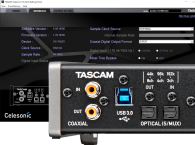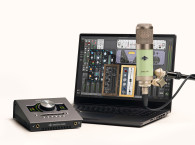
Producers and musicians recording to a computer workstation with performer foldback can now achieve near zero latency by simply enabling ADM in the software. SADiE turnkey recording systems and other hardware based Time Division Multiplexing (TDM) recording systems like Pro Tools can already provide low latency monitoring through their own integrated hardware. They achieve this by implementing the processing for channels and mixers in proprietary DSP, thus removing their dependence on the computer and ensuring that they are not subjected to computer I/O latencies. However, in ‘native’ systems where the DSP processing is carried out by the host computer’s Central Processing Unit, the computer’s I/O latencies are in the signal path and can result in unwanted delay in the monitor outputs.
By incorporating ADM into Titan, Atlas and Lyra, Prism Sound is ensuring that each of these products has a common protocol that enables the workstation software to control separate dedicated monitoring mixers in the audio interface device. Input monitoring operates directly through the interface – i.e. exactly like a hardware TDM system – you don’t ever have to worry about input monitoring delays again.
“Many audio interfaces already have mixer functionality for low latency monitoring, but don’t offer any integration with workstation (DAW) software,” says Prism Sound’s Sales and Marketing Director Graham Bowell. “This means that, when recording, it is necessary to manually mute the channel in the workstation and then enable the monitor path in the interface mixer. By including ADM functionality in our audio interfaces, it is possible to automate the operation of the interface mixer by combining it with muting of the corresponding channel in the workstation. This is a much smoother and more convenient solution for end users who want to switch to a low latency input monitor path for recording.”
The premium “Sound Suite” version of Prism Sound’s SADiE digital audio workstation also now supports ADM and is therefore able to provide near zero latency monitoring in ‘native’ systems with Prism Sound ADM compatible interfaces as well as ADM capable interfaces from other manufacturers.
www.prismsound.com






